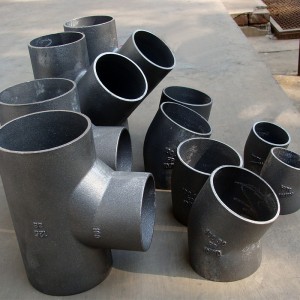- Afrikaans
- Albanian
- Amharic
- Arabic
- Armenian
- Azerbaijani
- Basque
- Belarusian
- Bengali
- Bosnian
- Bulgarian
- Catalan
- Cebuano
- China
- China (Taiwan)
- Corsican
- Croatian
- Czech
- Danish
- Dutch
- English
- Esperanto
- Estonian
- Finnish
- French
- Frisian
- Galician
- Georgian
- German
- Greek
- Gujarati
- Haitian Creole
- hausa
- hawaiian
- Hebrew
- Hindi
- Miao
- Hungarian
- Icelandic
- igbo
- Indonesian
- irish
- Italian
- Japanese
- Javanese
- Kannada
- kazakh
- Khmer
- Rwandese
- Korean
- Kurdish
- Kyrgyz
- Lao
- Latin
- Latvian
- Lithuanian
- Luxembourgish
- Macedonian
- Malgashi
- Malay
- Malayalam
- Maltese
- Maori
- Marathi
- Mongolian
- Myanmar
- Nepali
- Norwegian
- Norwegian
- Occitan
- Pashto
- Persian
- Polish
- Portuguese
- Punjabi
- Romanian
- Russian
- Samoan
- Scottish Gaelic
- Serbian
- Sesotho
- Shona
- Sindhi
- Sinhala
- Slovak
- Slovenian
- Somali
- Spanish
- Sundanese
- Swahili
- Swedish
- Tagalog
- Tajik
- Tamil
- Tatar
- Telugu
- Thai
- Turkish
- Turkmen
- Ukrainian
- Urdu
- Uighur
- Uzbek
- Vietnamese
- Welsh
- Bantu
- Yiddish
- Yoruba
- Zulu
Aug . 16, 2024 15:22 Back to list
Bronze Investment Casting Manufacturing Facility for High-Quality Metalworks and Components
The Art and Process of Bronze Investment Casting A Deep Dive into the Bronze Investment Casting Factory
Bronze investment casting is a sophisticated manufacturing technique that combines art and engineering to create intricate metal components with precision and quality. The process is widely used in various industries, including aerospace, automotive, marine, and art, where high performance and aesthetics are paramount. Understanding this process requires a look into the factory environment that specializes in bronze investment casting.
At its core, investment casting, often referred to as lost-wax casting, is an ancient method that has been adapted and refined over centuries. The process begins with creating a wax model of the desired part. This model is coated with a ceramic material, forming a shell around it. Once the shell is hard, the wax is melted away, leaving a cavity that mirrors the exact geometry of the model. This is where the investment term comes into play, as the shell is a form of investment that holds the molten metal during casting.
In a bronze investment casting factory, precision is crucial at every step. Each wax model is meticulously crafted to ensure that the final product will have the required dimensions and surface finish. Advanced technologies, such as 3D printing, are often employed to create these wax patterns, allowing for complex designs and reducing lead times significantly.
Once the wax patterns are created, the next phase involves assembling them onto a gating system, which is essentially a set of channels that will allow the molten bronze to flow into the mold. The assembly is then coated with a ceramic slurry to form a robust shell. The shell is baked in a furnace to harden it and to evaporate any remaining wax, thus preparing it for the infusion of molten bronze.
bronze investment casting factory

The choice of bronze—an alloy primarily composed of copper and tin—offers excellent properties such as durability, corrosion resistance, and good casting characteristics, making it suitable for a wide range of applications. In the factory, the bronze is heated to a high temperature until it is molten. This molten metal is then poured into the pre-prepared ceramic shells, filling the cavities left by the wax patterns.
After the bronze has cooled and solidified, the next step involves breaking the ceramic shell away to reveal the cast parts. These components often require additional finishing processes, such as grinding, polishing, or machining, to achieve the desired specifications and surface quality. The care taken in these finishing touches significantly impacts the final appearance and functionality of the bronze parts.
In a bronze investment casting factory, quality assurance is a top priority. Parts undergo rigorous inspections to check for defects such as porosity, dimensional accuracy, and surface finish. Advanced techniques, including X-ray inspections or ultrasonic testing, may be employed to ensure that the integrity of the cast parts meets industry standards.
Another significant aspect of a bronze investment casting factory is sustainability. Many modern factories are increasingly adopting environmentally friendly practices, such as recycling scrap metal and utilizing energy-efficient processes. The focus on sustainability not only helps protect the environment but also improves the overall efficiency of the manufacturing process.
In conclusion, a bronze investment casting factory is a hub of precision, skill, and technology. The intricate process of creating bronze components through investment casting requires a blend of traditional craftsmanship and modern innovation. As industries continue to demand more complex and high-quality metal parts, the importance of investment casting—and the factories that specialize in it—will undoubtedly grow. These factories play a vital role in shaping the future of manufacturing, providing solutions that meet both performance and aesthetic requirements in an increasingly competitive market.
-
8mm Thin-Walled Cast Steel Manhole Cover Pallet Bottom Ring | Durable
NewsAug.04,2025
-
Premium Cast Iron Water Main Pipe: Durable, Corrosion-Resistant
NewsAug.03,2025
-
Durable Cast Iron Water Mains | AI-Optimized Systems
NewsAug.02,2025
-
High-Efficiency Propane Boiler for Baseboard Heat | Save Energy
NewsAug.01,2025
-
Premium Source Suppliers for Various Gray Iron Castings
NewsJul.31,2025
-
Durable Cast Iron Water Main Pipes | Long-Lasting
NewsJul.31,2025


